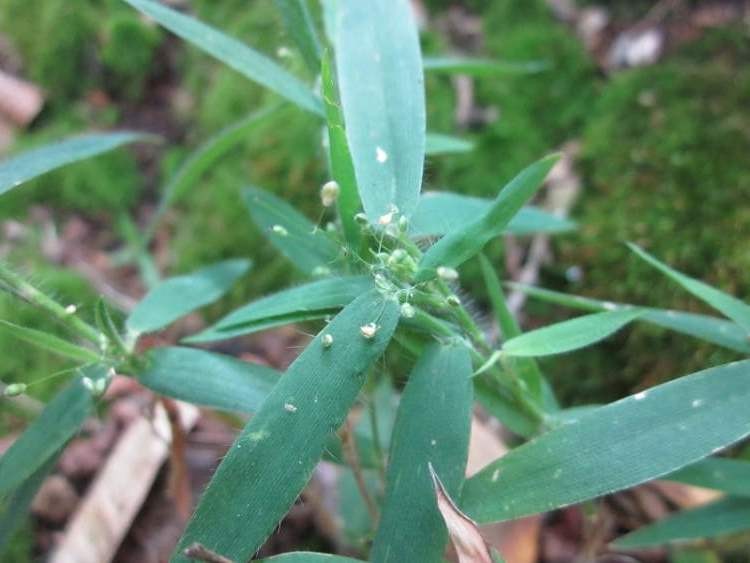Deertongue
(Panicum clandestinum)

Description
Dichanthelium clandestinum is a species of grass known by the common name deertongue. It is native to eastern North America, including eastern Canada and the eastern United States. This species is a rhizomatous perennial grass forming clumps of hairy stems up to 1.4 meters tall. Five to 10 leaves are located along the stem. Each is up to 25 centimeters long by 3 wide, lance-shaped, sometimes rigid, and hairless to slightly hairy. There are two types of inflorescence. The main panicle contains many spikelets with flowers that open and are pollinated. Another type of inflorescence contains cleistogamous flowers: flowers which do not open and pollinate themselves. These are located in the sheaths of the stem leaves and are sometimes hidden. They are produced later in the year than the open panicle.There are about 400,000 seeds per pound. This plant is tolerant of high levels of aluminum in soils. It tolerates acid soils and thin, infertile soils. It can be used to revegetate reclaimed land such as mine spoils. The cultivar 'Tioga' has been available since 1975. The seeds of deertongue attract many types of birds, such as turkeys. The grass is not considered a good forage for livestock because it is low in nutrients. Dichanthelium is genus of flowering plants of the grass family, Poaceae. They are known commonly as rosette grasses and panicgrasses. Formerly a subgenus of the genus Panicum, Dichanthelium was elevated to genus status in 1974. Its species are still treated as members of Panicum by some authorities, because the two genera are very similar in form.Molecular data support the recognition of Dichanthelium as a separate genus. The name Dichanthelium originates from the Greek for "twice-flowering", in reference to the vernal and autumnal growth phases. These are perennial grasses, sometimes with rhizomes. The grasses may overwinter as rosettes of short, wide leaves and then produce longer, wider leaves on the stem during spring. They produce hollow stems a few centimeters tall to well over one meter. They are upright to erect when new, then sometimes sprawling, spreading, and bending as the season progresses. The upper stems may have a few main branches that divide into smaller branches bearing panicles. There are primary panicles, which may be chasmogamous, and secondary panicles, which are often cleistogamous. The spikelets are roughly 1 to 5 millimeters long and lack awns.
Taxonomic tree:







